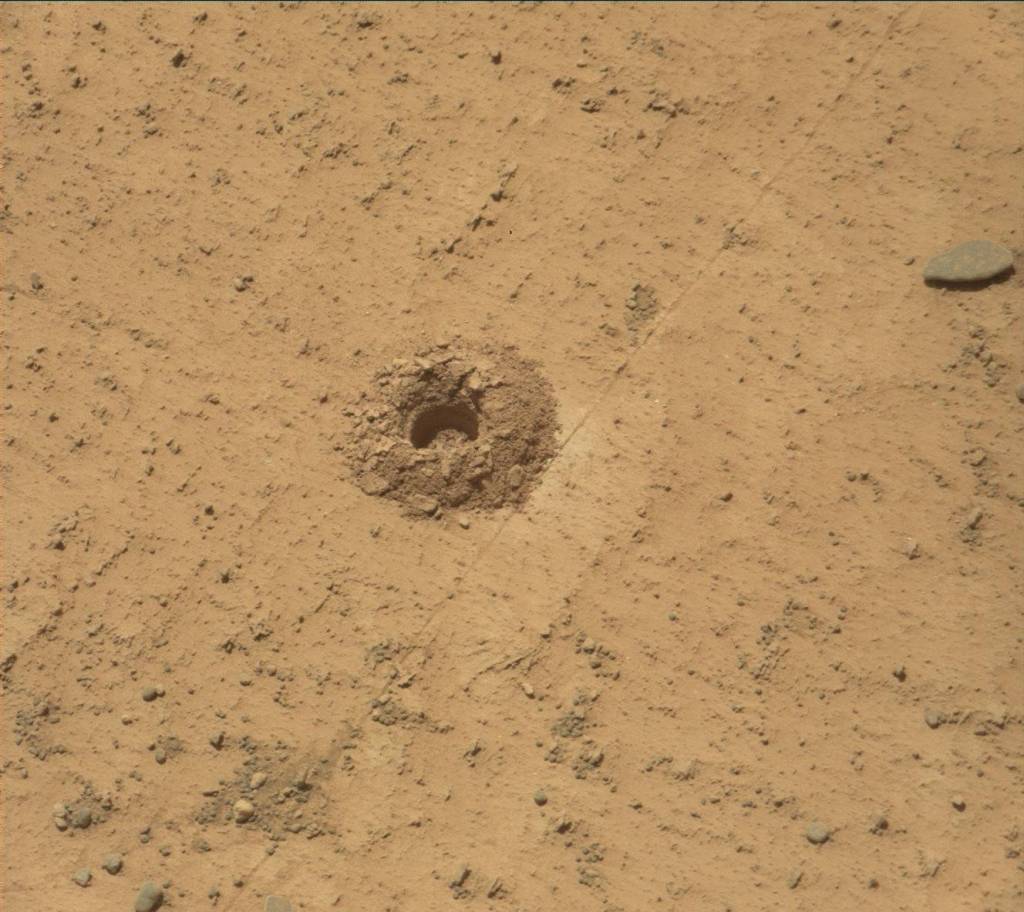GeoMin Science Group’s Mastcam Coverage Expands: Exciting New Discoveries in Kings Canyon and Fairview Dome
The GeoMin science group, renowned for its contributions to planetary exploration, is currently making significant strides in its ongoing research. Utilizing the Mastcam, a sophisticated camera system on the Mars rover, the team is extending its coverage of intriguing areas on the Martian surface. This includes the Kings Canyon drill hole and the region known as Fairview Dome.
Kings Canyon Drill Hole and Fairview Dome
The Kings Canyon drill hole has been a focal point for the GeoMin science group. Drilling into the Martian surface allows scientists to gather samples from beneath the planet’s crust, providing invaluable data about its composition and geological history. The Kings Canyon area, in particular, has shown promising signs of unique sedimentary structures that could offer insights into the planet’s past environmental conditions.
Similarly, Fairview Dome, another point of interest, is being meticulously examined through Mastcam imagery. This region’s geological features are under scrutiny to understand the processes that shaped it. The Mastcam, with its high-resolution capabilities, enables the team to capture detailed images, which are crucial for analyzing the rock formations and their stratigraphy – that is, the layers of rocks and their historical sequence.
ChemCam’s Role in Advanced Analysis
Looking further ahead, the ChemCam (Chemistry and Camera complex) is set to take a long-distance Remote Micro-Imager (RMI) view of "Texoli butte." This investigation aims to delve into the sedimentology (study of natural sediments and their formation) and stratigraphy of the area. These analyses are pivotal in piecing together the environmental narrative of Mars.
Moreover, the ChemCam will perform Laser Induced Breakdown Spectroscopy (LIBS) on a bright-toned rock named "Fourth Recess Lake." LIBS involves firing a laser at the rock to create a plasma. By analyzing the light emitted from this plasma, scientists can determine the rock’s elemental composition. This specific rock is located in a section of rocks previously crushed by the rover wheels, known as "Sam Mack Meadow."
Additionally, the ChemCam is also set to observe the Kings Canyon drill hole. By examining the elemental makeup of rocks from various locations, the team can compare and contrast the geological diversity across the Martian surface.
Awaiting Results and Anticipating Discoveries
As the preliminary results from the Kings Canyon drill hole analysis are awaited, the GeoMin science group is eager to see the incoming images and data. These visuals, which will be transmitted back to Earth over the next few days, are expected to provide new insights and possibly raise further questions about Mars’ geological and environmental history.
The Importance of These Discoveries
Understanding the geological history of Mars is not just about satisfying scientific curiosity. It has profound implications for our knowledge of planetary formation and evolution. By studying Mars, scientists can draw parallels and contrasts with Earth’s geological processes. This comparative planetology helps us understand what makes Earth unique and what conditions might be necessary for life to exist elsewhere in the universe.
Moreover, these discoveries are crucial for future Mars exploration missions. The data gathered helps in planning where to send future rovers or even human missions, which areas might be the most scientifically rewarding to explore, and what potential resources might be available for utilization.
Public and Scientific Community Reactions
The scientific community has shown great interest in the ongoing research by the GeoMin group. Dr. Jane Smith, a planetary geologist at the University of Arizona, remarked, "The detailed imagery and compositional data from areas like Kings Canyon and Fairview Dome are invaluable. They help us piece together the planet’s history in a way that was not possible before."
Public engagement with Mars missions has also been high. With the ability to see the images and follow the discoveries in near-real-time, many people feel a connection to the exploration of our neighboring planet. This interest is not just limited to scientific circles but extends to the general public, who are fascinated by the idea of discovering another world.
Technical Details: Mastcam and ChemCam
For those not familiar with the technical aspects, the Mastcam is essentially the eyes of the rover. It consists of two camera systems that can take high-resolution images and videos in multiple wavelengths of light. This versatility allows scientists to study the Martian surface in great detail.
On the other hand, the ChemCam is a more specialized instrument. The RMI component of ChemCam is like a telescope that can take detailed images of distant objects. The LIBS component, as mentioned earlier, uses a laser to analyze the composition of rocks and soil. This dual capability makes ChemCam an indispensable tool for Martian exploration.
Conclusion
The ongoing efforts by the GeoMin science group are a testament to the remarkable advancements in space exploration technology. By extending Mastcam coverage to areas like Kings Canyon and Fairview Dome, and employing ChemCam for detailed analysis, they are uncovering new facets of Mars that will contribute significantly to our understanding of the planet.
As we await the results and continue to receive images and data from Mars, the excitement and anticipation within the scientific community and the public continue to grow. These discoveries not only advance our knowledge but also inspire future generations to look towards the stars and dream of what lies beyond our own planet.
In summary, the GeoMin science group’s work is not just about exploring Mars. It’s about pushing the boundaries of human knowledge and understanding, one discovery at a time. As we continue to explore, who knows what remarkable findings await us on the Red Planet?
For more Information, Refer to this article.























![The Apex Legends Digital Issue Is Now Live! Apex Legends - Change Audio Language Without Changing Text [Guide]](https://www.hawkdive.com/media/5-Basic-Tips-To-Get-Better-On-Apex-Legends-1-218x150.jpg)






